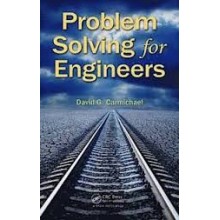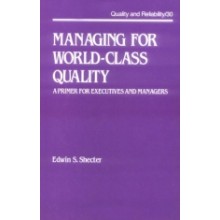Managing Projects as Investments: Earned Value to Business Value
Quantity:
-
Add to Compare
Every project is an investment; however, traditional project management methodologies do not support assessment of the business value that enables senior management to maximize decision making. The next evolution in project management, therefore, will be to manage projects as investments.Managing Projects as Investments: Earned Value to Business Value provides tools and metrics to enable planning, measuring, evaluating, and optimizing projects.
This book shifts the paradigm. It builds on traditional scope-cost-schedule tools, adding a critical new focus on the expected value of projects and programs. The enhancements in processes and metrics allow senior management and PMOs to guide the entire organization on the basis of business benefits, and to ensure that decisions ranging from project selection to resource assignment facilitate those goals. The author shows how framing projects as investments enables significant improvement in project performance. He provides metrics that allow you and your team to track and maximize performance based on ROI.
Demonstrating the importance of recognizing an enabler project in a program, and why its value and cost of time are so great, the book provides the tools to determine right-sized staffing levels for project-driven organizations. It includes a comprehensive but easy-to-understand explanation of both basic and advanced earned value metrics, their shortcomings, and how they can be improved and shows you how to optimize contract terms on projects in a way that can avoid misaligned customer/contractor goals.
Table of Contents
Redefining projects
Value drivers
Planning and tracking projects as investments
Traditional project tracking
Project success and failure
Of deadlines and budgets
Procrustean bed of deadlines
Quantifying the triple constraint model
COST side of the project investment triangle
Finance departments and overhead burdens
SCOPE side of the project investment triangle
Product scope: Main generator of project value
Project scope: A secondary generator of the project value
Customer value and internal value
Implications of various contract types
Project investment metrics
Expected project profit planning formula
Expected project profit at completion formula
Examples of expected project profit calculation
Summary points
Endnotes
Of time and timing
Simple example of the complexities of managing time
Examples of impact of time on projects
Impact of time on emergency response projects
Impact of time on enabler projects
Impact of time on contractual enabler projects
Ignoring the cost of time
Time as an externality
Summary points
Endnotes
Tracking projects by investment value
Expected value versus actual value
DIPP: A formula to analyze termination of a project investment
Simple DIPP: Setting the baseline for expected project
profitability
DIPP Progress Index (DPI): Tracking project value against
baseline DIPP
Case for this new approach to planning projects
Summary points
Endnotes
Managing project time
Critical path is—uh—critical!
Activity identification and duration estimating
Hard and soft dependencies
Basics of the CPM algorithm
Critical path drag
Managing change
Riding a changing schedule
Answers and explanations
A tragic example from history
Summary points
Endnotes
Optimizing the schedule with drag and drag cost
Drag cost
True cost of project activities
Resource elasticity and the DRED
Using the DRED with true cost
Cautionary note on using the DRED
Assessing optimization of the CPM schedule
Three-point estimating
Monte Carlo systems
Summary points
Endnotes
Combining project investment tools
Step : Determine expected monetary value of the project
Kindb // : PM
Contents ix
Step : Develop a value breakdown structure (VBS)
Estimating the value-added of the training project to the
immunization program
Estimating the value-added of activities in the training project
Step : Determine value/cost of time on the project
Step : Computing drag cost of optional activities
Step : Calculating net value-added of optional activities
Uncertainty principle in schedule optimization
Final word on the schedule optimization process
Using critical path drag to recover a schedule
Computing critical path drag on a schedule subset
Summary points
Endnotes
Of resources and rightsizing
How we got to this point
Resource availability and project CPM schedule
Resource unavailability and activity duration estimates
Role of the functional manager
Utilization rate metric
Maintaining the resource library
Working around lack of a resource library
Resource leveling
Time-limited resource leveling
Resource-limited resource leveling
The cost of leveling with unresolved bottlenecks (the CLUB)
Elusive goal: Stable staffing levels for a project-driven organization
Rightsizing staffing levels for a project-driven organization
Summary points
Fundamentals of earned value
What earned value is and isn’t
Just what is earned value?
Fundamental basis of earned value tracking
Basic earned value cost tracking formulas
Basic earned value schedule tracking
Flaws in earned value schedule tracking
Gaming the SPI
Fixing the SPI
Earned schedule tracking
Tracking the DIPP through earned value
How to use the DIPP to redeem projects
Summary points
Advanced earned value
Earned value based on milestones
Tracking CPI based on labor
To complete performance index (TCPI)
Critical ratio cost index
Earned value based on milestones
Combining earned value metrics with the DIPP
Summary points
Conclusion
Appendix
Glossary
Index
K
Write a review
Your Name:Your Review: Note: HTML is not translated!
Rating: Bad Good
Enter the code in the box below:
Copyright © 2014 Engineering Standards Bureau. All Rights Reserved.
Developed By Zoom Into Web









